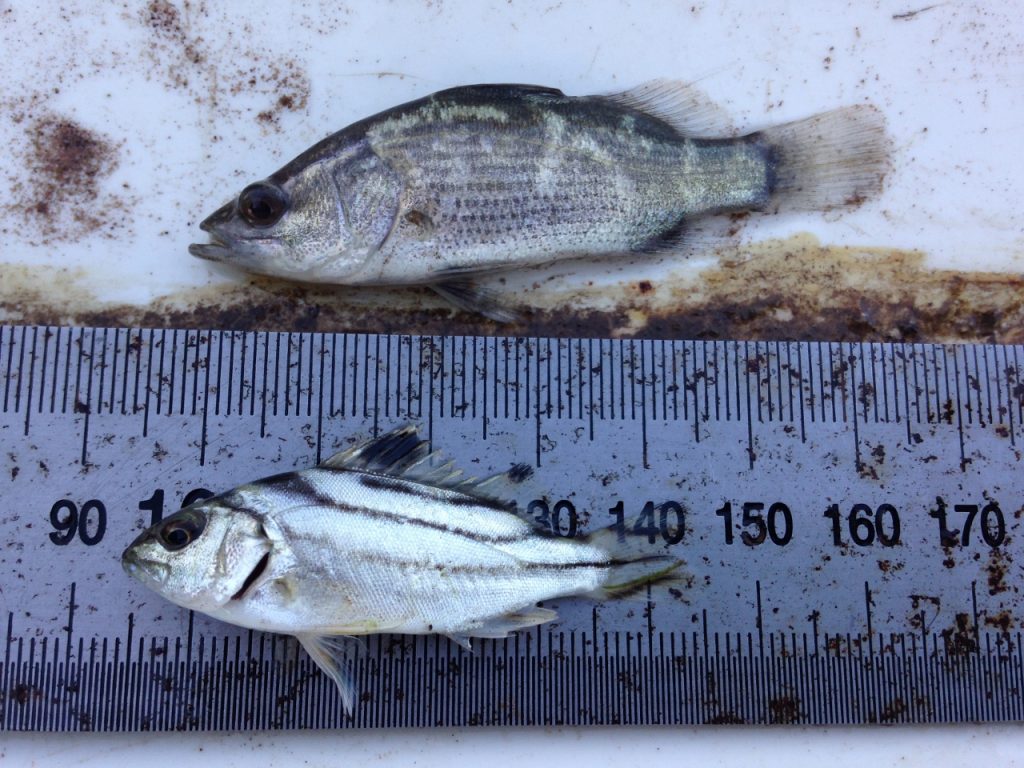Following fishway monitoring in the Mackay-Whitsunday region, sampling on Boundary Creek in the Rocky Dam Creek Catchment in Koumala revealed juvenile barramundi as small as 43 mm were successfully ascending the fishway.
Catchment Solutions aquatic ecologist, Matt Moore, remains excited about the construction of purpose built fishways in the Mackay-Whitsunday area.
“Most fishways built in the past have not presented conditions favourable for weaker swimming juveniles – they only ever recorded larger 150mm +Barra – so scientists thought this was the minimum size – but really it was poor fishway design, and poor knowledge of fish biology/migration. Every fishway we build we gain new knowledge on migration.”

The numbers, and particularly the small size of the barra are significant, some of the smallest juvenile barra recorded migrating through fishways in Australia.
“This is an indication that our newly designed fishways are successful at passing fish- as in the past fishway designs, like Marian weir, Fitzroy river, were based on northern hemisphere designs- specifically for Atlantic salmon, which can jump, our fish can’t. So the velocity and drops between pools must be smaller, which is what we have done.” Mr Moore said.
The concrete-cone fishway consists of 75 mm drops between pools – whereby the fish use their ‘burst speed’ to swim through this small ‘drop’ before reaching the pool, resting, and going again, until they reach the wetland habitat upstream.
At their peak, 2 barramundi an hour were migrating through the concrete-cone fishway. The fishway was successful at passing other important fish species attempting to reach their nursery habitat, including giant herring, silverbiddy’s, mullet, crescent perch and banded scats.
Importantly, all these fish species are diadromous (migratory), migrating between the sea where they breed and freshwater habitats such as wetlands and rivers. These habitats have abundant food resources and good in-stream cover (habitat) which enables them to feed, grow quickly and evade large predators before migrating back downstream to breed. In just 2 days 4056 fish successfully migrated through the fishway.
Choosing locally sold and sustainable fish like Barramundi means not only are you buying fresh, but you’ll support your local seafood industry – providing a much needed boost.
“More Barra and mullet migrating upstream through fishways reaching their nursery wetland habitats, means more fish for anglers to catch. If they don’t reach wetlands they get eaten by the abundant predators that live in the estuary. This is why correctly designed fishways are so important, now and into the future.” Mr Moore said.
*Fishway: Many important commercial and recreational fish species require unimpeded access between freshwater and estuarine habitats to complete their life cycle or maintain sustainable populations. Fishways (also often known as fish ladders or fish passes) are structures placed on or around anthropogenic barriers such as dams or weirs to give fish the opportunity to migrate. Fishways are designed, constructed and maintained to facilitate aquatic connectivity between upstream waterways, wetlands and estuarine ecosystems and provide fish passage though barriers that could otherwise prevent, delay or obstruct fish migration.